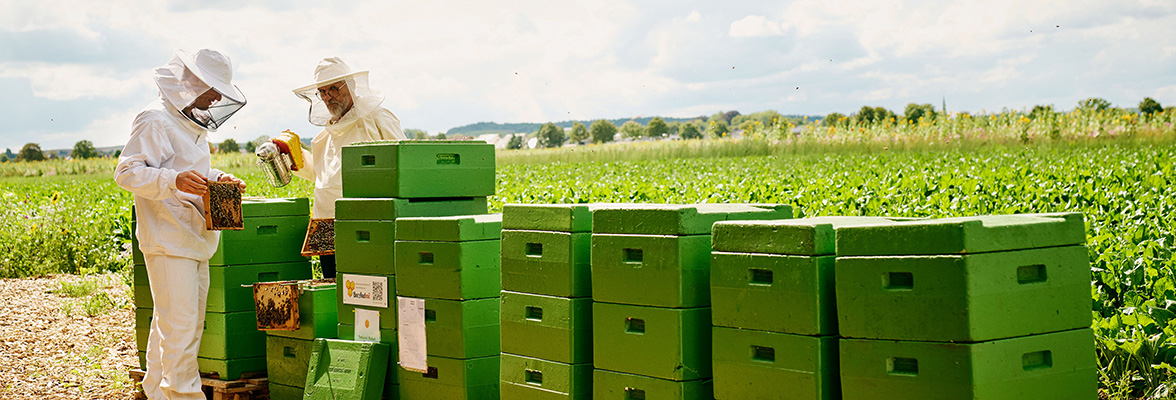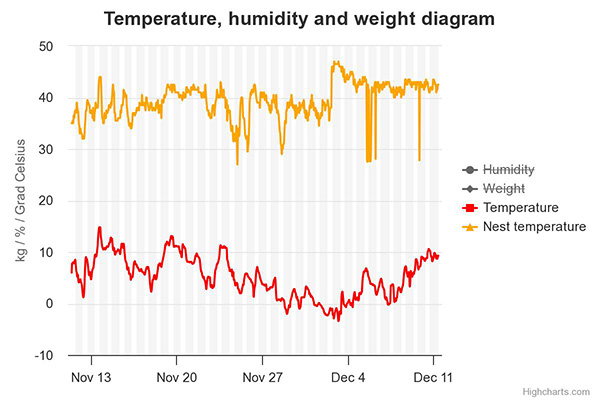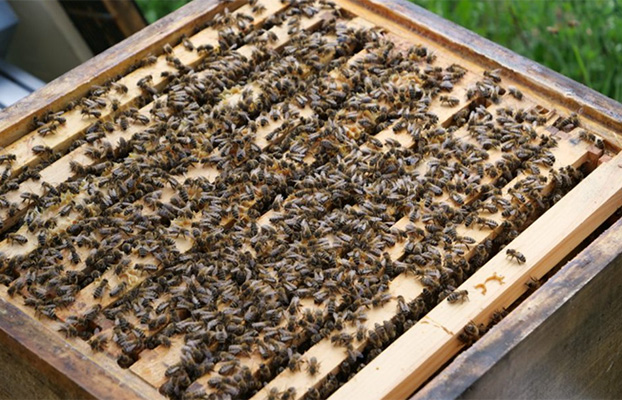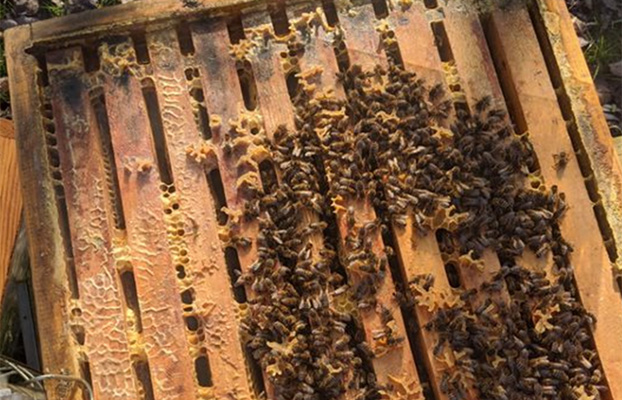In this article you will read
- why bees are so important for humans and the environment,
- how the Internet of Things and artificial intelligence can protect them with the help of cloud computing and
- how bees spend Christmas.

In this article you will read
Monocultures, pesticides and habitat destruction: the threat to bee colonies is increasing rapidly worldwide. While environmental toxins and one-sided forms of cultivation are causing problems for bees in rural areas, urban bees are mainly struggling with deadly pathogens. Yet these industrious insects are not only important for honey production. In Germany alone, they pollinate up to 80 percent of flowering plants – an indispensable prerequisite for fruit and vegetable harvests. Their pollination generates a gross national product worth 70 billion dollars worldwide. This makes honeybees one of the most important farm animals alongside pigs and cattle. The decline in the global bee population could have devastating consequences for humans and the environment. However, modern technologies, installed in the smart beehives of the start-up BeeAndme, offer beekeepers new solutions to protect these valuable animals. Deutsche Telekom has also been offering bee colonies a smart home on its premises since 2017 – now at over 30 locations in Germany, Spain and the Netherlands.
In addition to information on temperature (brood chamber and outside temperature) and humidity, the smart sensors also record the fill level of the honeycombs every hour and transmit the collected data to the Open Telekom Cloud via the mobile network. The number of flowers visited, the so-called pollination performance, is also calculated from the daily honey input as a CSR key figure. The data can be accessed via a dashboard using a smartphone or web browser.

In the beginning, their servers were still under the start-up's desks, but then the entrepreneurs quickly reached their limits as the number of customers and their requirements increased. Support and hardware maintenance took up a large part of the work, leaving little time for the actual business. That's when Deutsche Telekom's offer to switch to the Open Telekom Cloud came in handy. Since then, the BeeAndme software has been provided sponsored from Telekom's public cloud. Among other things, the startup uses virtual machines from the Elastic Cloud Server (ECS), the Web Application Firewall (WAF) and the Anti-DDoS to protect itself against unwanted access to the website and distributed denial-of-service attacks (DDoS). Wherever possible, standardized services are used to keep support costs as low as possible. “We want to make the technical setup as simple and standardized as possible,” says Patrick Köhler from T-Systems, who supports BeeAndme in the technical implementation and is an enthusiastic beekeeper himself. “This allows us to provide a smooth and uncomplicated cloud environment that can be configured as required without wasting too much time.”
Artificial intelligence is also utilized: with the help of TensorFlow and Open CV, the company counts how many bees fly in and out of the Innovation Center's two research beehives in Munich. In combination with an environmental sensor, bee activity can be measured in relation to various air pollutants.
The annual cycle of bees is essentially dependent on two factors: the food supply in the environment and the climate conditions.


Sustainability in the Open Telekom Cloud
Sustainable digitalization for your business – thanks to green data centers with carbon-neutral IT resources from the Open Telekom Cloud.
The cloud is only at the start of its sustainability journey
The cloud as a sustainability panacea? German Santini, Sustainability Manager of the Open Telekom Cloud, reflects the interplay of cloud an sustainability.
“Clear gain in efficiency” – twenty20 migrates completely to the Open Telekom Cloud
The software experts at twenty20 migrated their entire application landscape to the Open Telekom Cloud. Sustainability was an important criterion in the cloud selection.
The Open Telekom Cloud Community
This is where users, developers and product owners meet to help each other, share knowledge and discuss.
Free expert hotline
Our certified cloud experts provide you with personal service free of charge.
0800 3304477 (from Germany)
+800 33044770 (from abroad)
24 hours a day, seven days a week
Write an E-Mail
Our customer service is available free of charge via E-Mail
AIssistant Cloudia
Our AI-powered search helps with your cloud needs.